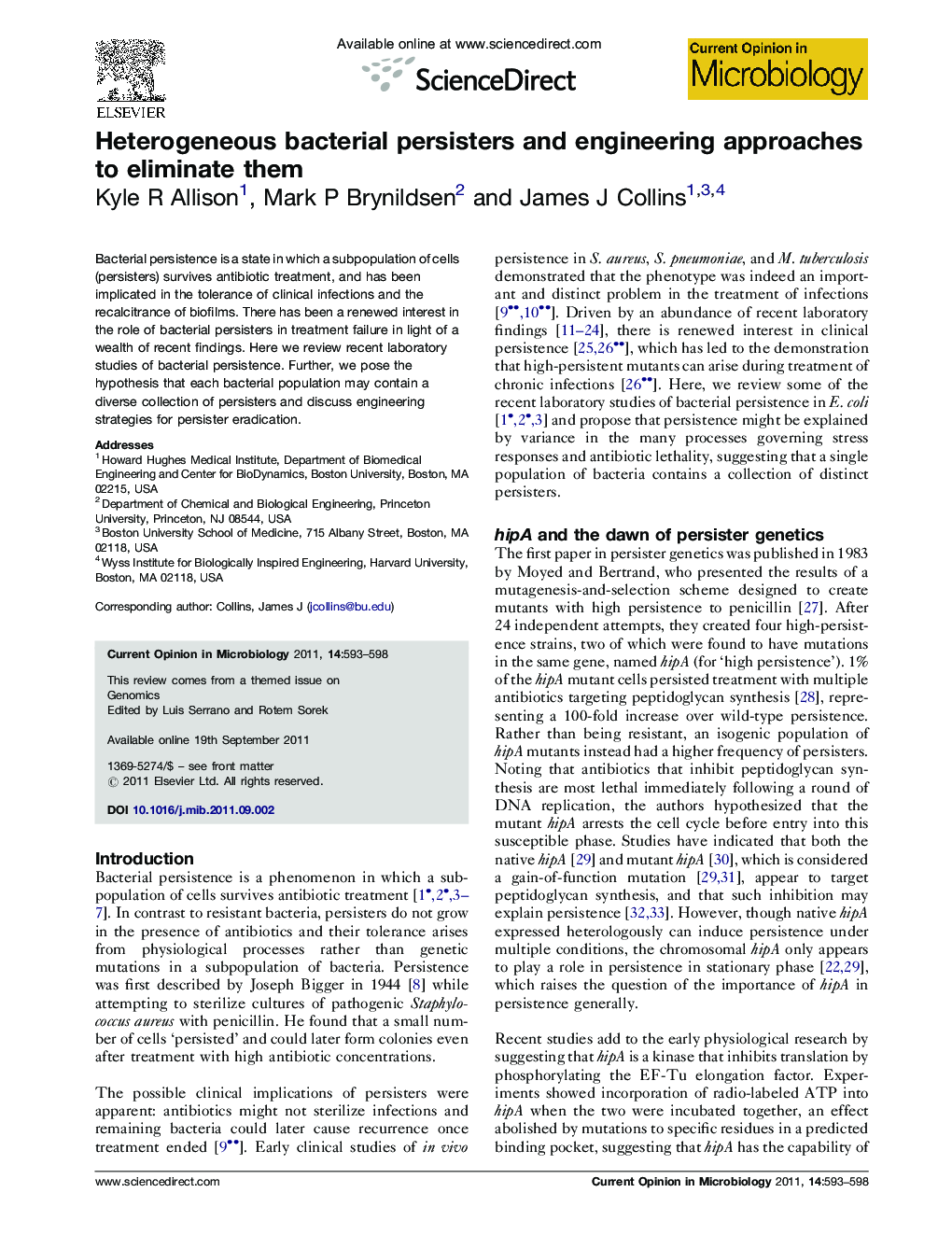| Article ID | Journal | Published Year | Pages | File Type |
|---|---|---|---|---|
| 3399216 | Current Opinion in Microbiology | 2011 | 6 Pages |
Bacterial persistence is a state in which a subpopulation of cells (persisters) survives antibiotic treatment, and has been implicated in the tolerance of clinical infections and the recalcitrance of biofilms. There has been a renewed interest in the role of bacterial persisters in treatment failure in light of a wealth of recent findings. Here we review recent laboratory studies of bacterial persistence. Further, we pose the hypothesis that each bacterial population may contain a diverse collection of persisters and discuss engineering strategies for persister eradication.
► Review of current laboratory research on persisters, including the roles of growth heterogeneity, stationary phase, and the SOS-response. ► History and phenotypes associated with hipA. ► Hypothesis that each bacterial population contains many different persisters with different tolerance mechanisms. ► Engineering strategies for eradicating bacterial persisters.
